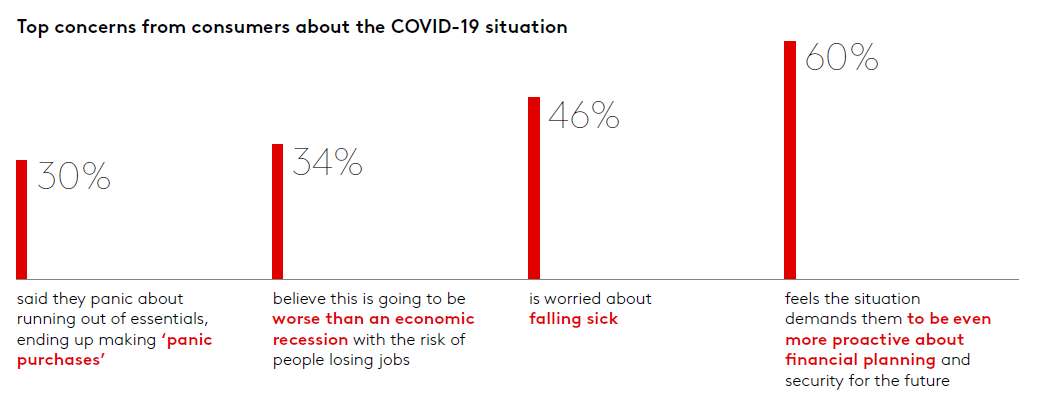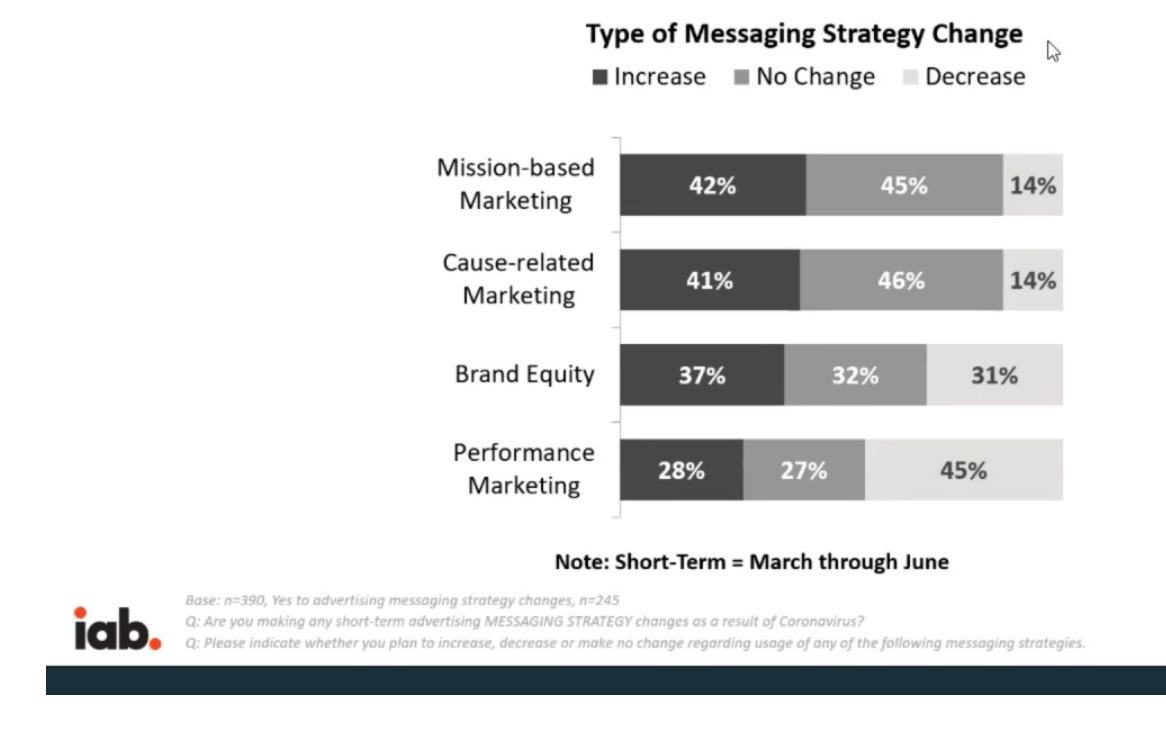COVID-19 Impact Report: Insurance, Banking & Finance
Advertisers are currently faced with three choices: should they increase, maintain, or decrease support for their brand in response to the COVID-19 pandemic?
While it is tempting to make cuts to media investments, brands should consider continuity and long-term impact, especially industries consumers look to for safety and security like banking and insurance. There is value in brand-building and brands need all the equity they can get right now. Consumers are in crisis and looking to institutions they trust to get them through this.
A century of experience shows us that advertisers who maintained or increased ad spend during economic downturns grew in sales and market share during the recession and beyond. Several studies also point to the many advantages of maintaining or even increasing ad budgets during turbulent times.
Growth in share of voice drives growth in market share. This means the brands that start to control more of the conversation during unprecedented times will find themselves in a better place when we come out on the other side. Businesses are only as strong as the communities they are a part of, and businesses that stay close to their customers will continue to do well regardless of the current climate.
“While many industries are pulling back on spend amidst the COVID-19 pandemic, there are some verticals with increased interest and demand including insurance and banking. Two of our clients in the banking space have seen virtually no change. In some cases, we’ve even seen an improvement in the volume of bank account sign-ups, as advertisers update campaign messaging,” reports Causal IQ’s Vice President of Operations, Jennifer Laing. “We’ve also seen a spike in insurance leads.” Brands need to focus on increasing consumer confidence to ensure consumer spending isn’t strained beyond the temporary COVID-19 economic shock.
According to Adrian Gonzalez, CEO of Kantar in Northeast Asia, Southeast Asia and Pacific, “What people worry about the most is what COVID-19 will mean for their financial security as it potentially impacts longer-term economic health. This poses an added problem that the choices people make may continue to change well after the epidemic comes to an end. How to deal with this seems to be a matter of trust.”

So, where should brands focus their attention right now?
Consumers are dealing with a worldwide health crisis alongside a looming economic catastrophe. Institutions and brands should look to reposition messaging and take a holistic approach that is mindful of consumers. Reassure consumers with options to protect and support them.
According to Marla Kaplowitz, President and CEO of the 4A's, “Brands exist in the minds of consumers.” Consumers want to hear from brands, but brands need to get it right. For example, Ford pulled their national vehicle ads replacing them with a coronavirus-response campaign meant to inspire trust and goodwill in a time of crisis. The spots plug a payment relief program and remind consumers how the company has responded during previous disasters.
Note the mention of trust. Messaging needs to extend beyond the fluffy “we’re here for you” rhetoric and communicate a deep understanding of the consumer experience and their changing priorities.
Financial institutions can offer things like:
- vehicle payment deferrals
- credit card payment deferrals
- mortgage and home equity forbearance
- small business loan modification options
- suspended foreclosure activity
The IAB recently released the results of a survey conducted among members to show how messaging strategy is changing in response to the COVID-19 pandemic. Forty-two percent expect to increase mission-based marketing, 41% expect to increase cause-based marketing, and 37% are focused on brand equity.

According to a study by Harris Interactive & Yankelovich, the vast majority of executives (86%) agree that when they see a company advertising in a down economy, it makes them feel more positive about the company’s commitment to its products and services, and more importantly, it keeps those companies top-of-mind when purchase decisions are made down the road.
Emotions are at the core of consumer spending, but until people are back to work, purchasing power will remain depressed. We can look back in history to see that once the immediate threat is over, consumers do come back and they come back stronger than ever. In the long run, economic damage is determined not only by our management of the pandemic, but also by the level of consumer confidence. Policymakers must remember that recovery requires measures to protect and prop up consumer spending, but brands will have their own role to play here too.
